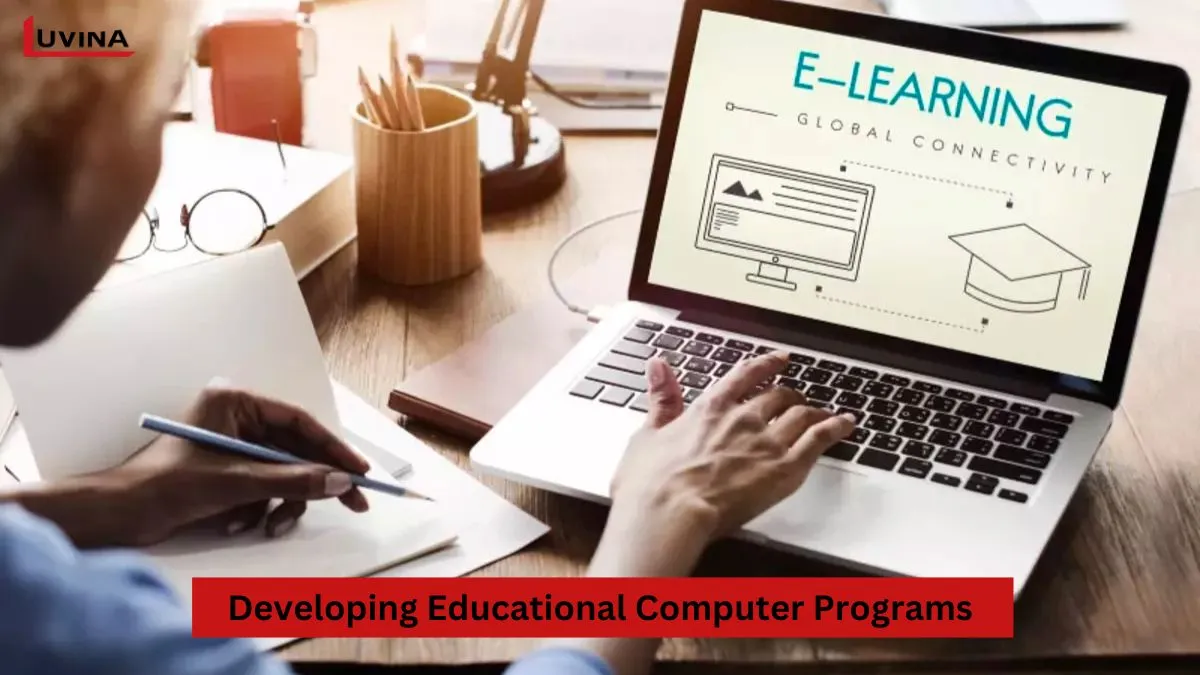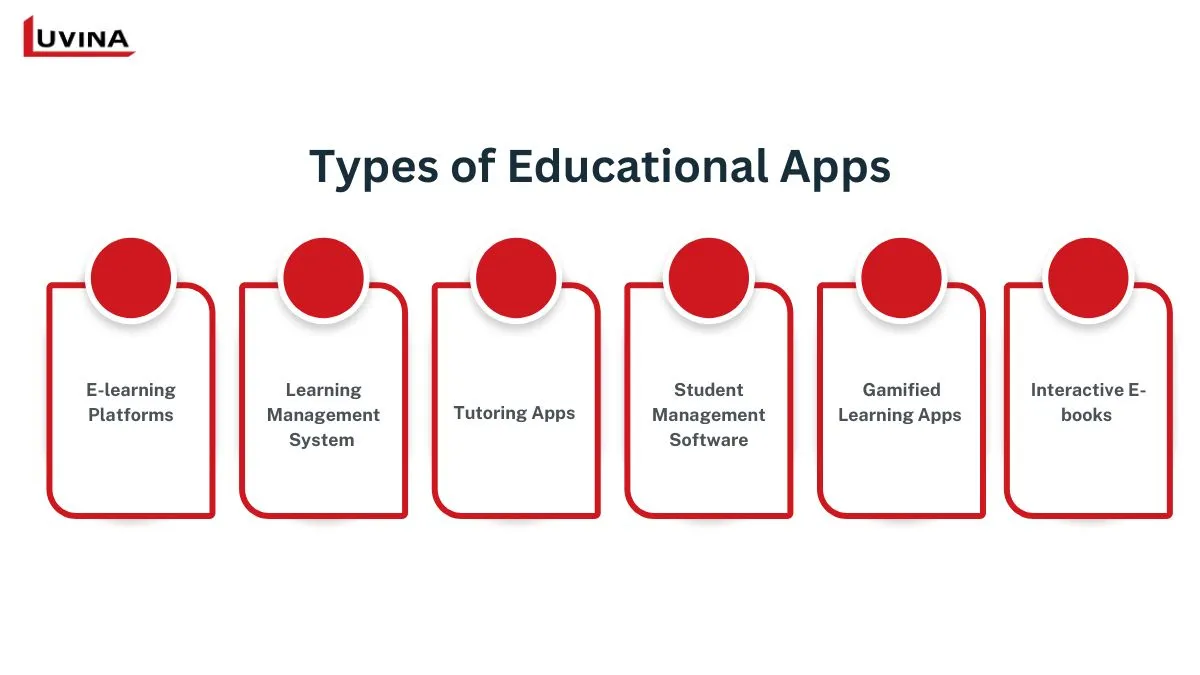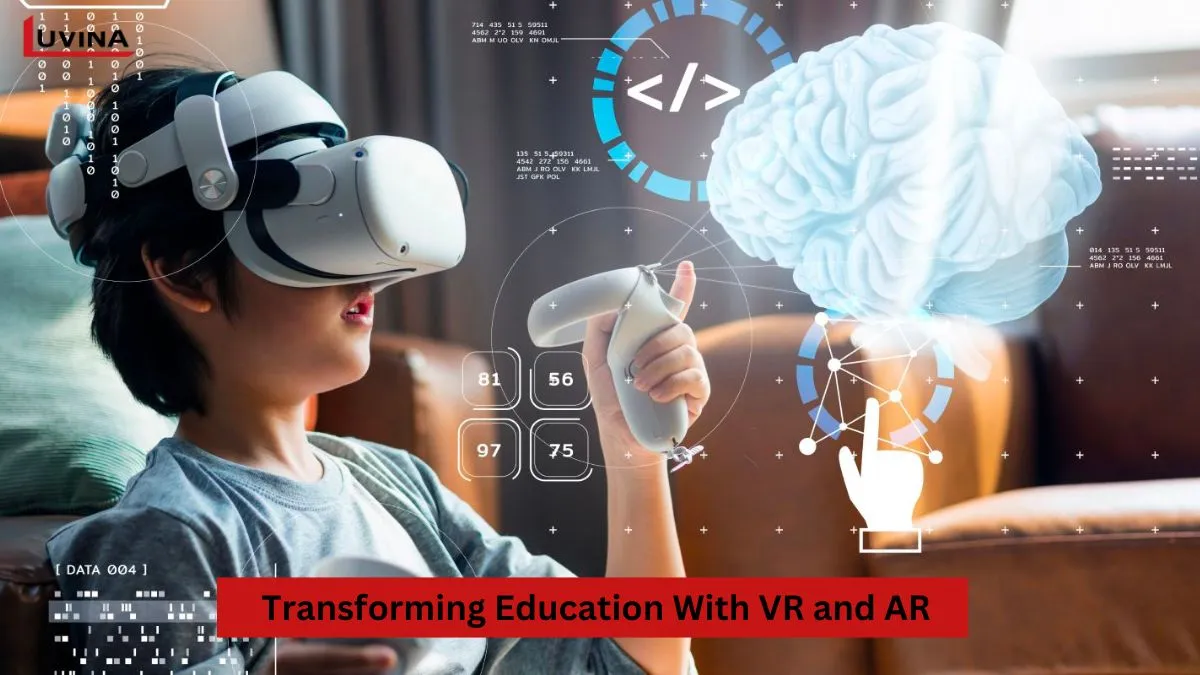Education software development is revolutionizing the learning process, rendering learning more accessible, interactive, and data-oriented. With the education software market worldwide poised to exceed more than $11.6 billion by 2025, online learning tools are increasingly becoming a part of educational and corporate training settings.
In this article, we learn about how e-learning software development is redefining traditional learning trends, the critical technologies driving the revolution, and how such products apply to schools and companies. Through AI tutoring, virtual classrooms, or adaptive learning software, whichever the case might be, learning in the future is being written with powerful software solutions based on more interaction and productivity.
What is e-learning software development?
Educational software development is the act of developing and building computer programs that enrich learning experiences for learners, instructors, and schools. This covers a wide range of applications, from basic subject-related programs to complex platforms with AI, interactive multimedia, and adaptive learning techniques.

As part of the synergy between instructional design, software development, and learning theory, such solutions strive to create interactive, efficient, and personalized learning platforms. With increased technological advancements, educational software itself is also increasingly sophisticated with advanced features like real-time analysis, gamification, and mobile application support to service the diverse needs of the current learner.
Benefits of educational software development
Edtech software development is revolutionizing the educational industry by making learning more engaging, personalized, and accessible. With the help of technological advancement, digital learning solutions are enhancing teaching and learning experiences along with offering low-cost and scalable solutions as substitutes for traditional methods. The following are the key benefits of education software development:
- – Personalized learning: Adaptive algorithms adjust content and pacing to match individual learning styles, ensuring a more effective and engaging experience.
- – Enhanced engagement: Interactive multimedia, gamification, and real-time feedback make learning more enjoyable and encourage active participation.
- – Improved accessibility: Web-based systems bypass spatial and geographic constraints, educating all learners throughout the world and the disabled.
- – Real-time feedback & analytics: Real-time grading and performance monitoring allow students to constantly improve, and teachers gain insights to make instruction adjustments.
- – Cost-effectiveness and scalability: E-learning solutions preclude the requirement to rely on hard materials and are readily scalable to accommodate masses of learners, hence making learning cheaper.
Types of educational apps
With the growing demand for digital learning solutions, custom edtech software has evolved into various categories to cater to different educational needs. These applications enhance accessibility, interaction, and productivity in learning by offering personalized experiences. Below are the most common forms of learning apps developed through e-learning software development:

1. E-learning Platforms
The website for online courses has in-depth studies on business, computer programming, photography, and more. These websites like Udemy and Coursera provide course material formatted with video presentations, quizzes, and practice sessions where students can consume the learning at their own pace.
2. Learning Management System
LMS solutions are hosted platforms for the presentation and administration of educational content. Moodle and Blackboard are examples of platforms that support teachers in observing student progress, structuring study material, and interacting with learners and instructors. Custom education software development enables institutes to create LMS solutions specifically tailored to match their method of teaching.
3. Tutoring Apps
Tutoring applications such as Khan Academy offer one-on-one tutoring experiences in the form of interactive lessons, practice problems, and immediate feedback. Such apps aid students who require extra help outside class or are more comfortable with self-paced study.
4. Student Management Software
Student management software makes the automation of administrative work possible by managing student records, attendance, grades, and academic progress. Such software is employed by universities and schools to maximize efficiency with proper educational data.
5. Gamified Learning Apps
Gamified apps present learning as an engaging idea using features such as leaderboards, challenges, and incentives. For example, Duolingo is a language-learning application that delivers engaging small games as learning material, enabling learners to be engaged and learn.
6. Interactive E-books
These digital books enhance traditional reading experiences by integrating multimedia elements such as animations, videos, and quizzes. More active engagement with the content allows students to learn through doing rather than through passive reading.
E-learning software development cost breakdown
Many factors, including the complexity of the software, its functionality, the geographical location of the development team, and the methodology followed in the development process, will determine the cost of developing educational software. On average, generating complex educational software runs from $25,000 to $150,000. By allowing you to create a simple tool or a complex custom platform, custom educational software development offers cost and feature variability, hence offering you cost and feature flexibility. These are the top factors influencing the cost of education software development:

1. Software complexity levels
- – Basic: Simpler learning applications, such as those that involve flashcards or quizzes, can typically cost anywhere from $15,000 to $40,000.
- – Medium: Applications that include multimedia integration, basic analytics, and interactive content tend to range from $40,000 to $80,000.
- – Advanced: More advanced systems with advanced features including AR/VR, real-time collaboration tools, or AI-driven personalization can run anywhere from $80,000 to $150,000 or more.
2. Features & functionalities
- – UI/UX design: A well-designed interface can improve the user experience, but complex designs can increase development costs.
- – Content creation: If the software includes custom educational content, interactive modules, or multimedia elements such as animations, simulations, and videos, the costs will rise.
- – Adaptive learning: Integrating AI and machine learning for adaptive assessments or personalized learning paths increases development costs significantly.
- – Collaboration tools: Features like discussion forums, group projects, and virtual classrooms will add additional expenses to the development process.
3. Technology stacks
The combination of databases, frameworks, and chosen programming languages will directly influence the cost of development and the overall performance of the software. The combination of third-party services like learning management systems, cloud infrastructures, or payment processors will also add to the final price and complexity of the project. Therefore, there is a requirement to choose the tech stack in such a way that the software can scale, be secure, and self-sustain in the long run.
4. Developer’s location
The cost of hiring developers varies widely depending on their location. Hiring an E-learning software development company in the USA or Western Europe may be more expensive than hiring developers in India, Eastern Europe, or Latin America, where technical skills and English proficiency are often high but the rates are lower.

5. Development methodology
- – Agile methodology: Although it costs more to establish in the first place, agile development is more flexible and can cost less in the long run.
- – Waterfall methodology: This is cheaper initially but is rigid and therefore can be more expensive if midway through the development process changes are needed.
Future trends in e-learning software development
The world of educational technology is evolving at light speed, with education software solution development leading the way in pushing the boundaries of what is possible in the learning environment. As more and more institutions and businesses look for new ways to enhance the learning experience, the future of educational development software is full of potential. Some of the most exciting trends that will change the edtech world over the next several years are enumerated below.
1. Personalized learning
Personalized learning is likely the most pervasive trend across e-learning software development. Through the integration of artificial intelligence (AI) and machine learning (ML), learning apps are increasingly able to provide personalized experiences that respond to the individual needs of each learner. Such technologies allow apps to analyze a student’s performance, refine content as a response, and suggest resources that fill specific knowledge gaps. Personalization enhances engagement and effectiveness, ensuring learners progress at their own rate.
For example, apps based on AI can shift the difficulty level of quizzes or give additional resources when a student is having difficulty with a particular topic. The trend will continue to develop how learning is shared, giving an even more interactive and personalized way of learning.
2. Gamification
Gamification, or the use of game features in learning, is a rapidly developing trend in e-learning application development. Gamification incorporates interactive simulations, learning games, and leaderboards or rewards as part of it to make the learning process more engaging and enjoyable for learners. This not only enhances motivation but also makes students stay occupied for longer periods, thereby enhancing overall learning achievement.

The addition of game-like features in learning software could be simpler or more challenging. Simple aspects like awarding points or medals for assignment completion could run into more advanced functionality like group assignments in which students develop and compete in learning games. Gamification helps learners to actively participate in their learning and remember more information by making the process interactive and enjoyable.
3. AI & ML
Part of education software development, artificial intelligence, and machine learning support wise tutoring, predictive analytics, and adaptive learning tools, all improvements to the general educational experience. Student analysis enables such tools to personalize learning paths and content for individual students so that students can learn at their own pace and attain maximum results.
Closing the gap between access and learning quality is also left to a significant extent on machine learning and artificial intelligence. Allowing teachers to tailor lessons according to each student’s particular strengths and challenges helps to make a more interesting and successful learning environment.
Dig deeper: How AI in LMS Transforms Learning Experiences
4. Virtual reality and augmented reality
Virtual reality (VR) and augmented reality (AR) are two revolutionary technologies that are transforming education by providing interactive, immersive learning experiences. Students have the opportunity to interact with material in an interactive and visually appealing setting using 3D simulations, virtual laboratories, and virtual field trips. Including AR and VR in best practices for education software development would help teachers provide an experience whereby learning is both enjoyable and profoundly involveable.
By enabling students to journey across virtual fields, perform experiments within virtual laboratories, or visit virtual places, such tools move education closer to becoming real. Accessible via proprietary VR/AR glasses down to smartphones and tablets, such virtual experiences enable students to touch, manipulate, and engage with things that cannot be done by conventional education.
>> Also read: Customize virtual LMS: Flexible eLearning solutions

E-learning software development best practices
When developing e-learning software development solutions, it’s essential to follow best practices that ensure the software is effective, engaging, and meets the needs of both educators and learners. Below are key best practices to keep in mind when building educational platforms:
- – Know your users’ needs: Conduct research and ascertain the requirements, issues, and expectations of students and teachers to develop a solution that addresses these needs in education software development.
- – Develop an integrated learning plan: Build a curriculum that is education standards compliant, providing unique learning paths and milestones to the learners.
- – Select the right tools and technologies: Pick the development tools that are scalable, secure, and device-interoperable, making sure that the software meets the needs of e-learning software development.
- – Make user-friendly navigation a priority: Develop an easy-to-use, intuitive visual interface that enhances user experience and interaction.
- – Provide actionable feedback: Offer regular, actionable feedback via quizzes and progress trackers so that learners can improve and stay engaged.
- – Iterate through testing and adjustments: Continuously test the software and gather feedback from users to fix issues and enhance usability.
Conclusion
In short, learning is being revolutionized through education software development that offers solutions tailor-made for every student to activate student engagement and automate administrative work. With the right combination of tools and technology, you can create an individualized learning environment that reflects the unique traits of teachers as well as students. With the further development of educational technology, it is important to partner with a reliable development company so that you can achieve your dream.
Don’t wait—take a step further in your software development today by contacting Luvina and shaping learning experiences.
Related Posts:









Read More From Us?
Sign up for our newsletter
Read More From Us?
Sign up for our newsletter